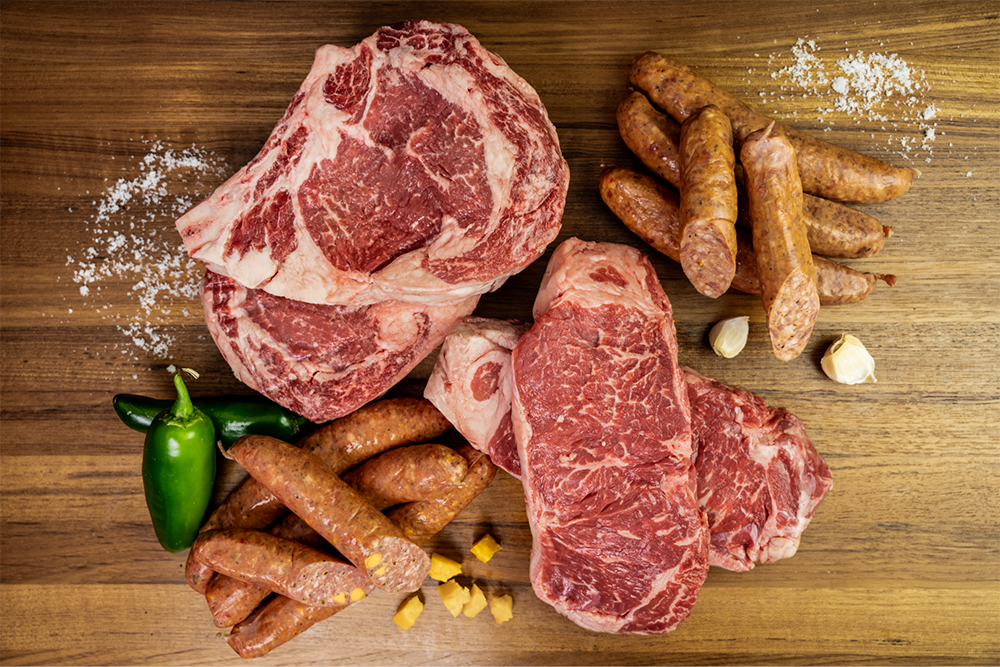Reveal the Art of the Butcher's Cut in a Modern Meat Market
In the ever-evolving landscape of modern-day meat markets, the butcher's cut has transcended its standard origins, combining age-old workmanship with contemporary techniques. Today's butchers are not just cpus of meat; they are experienced craftsmens that stress sustainability and moral sourcing. Their knowledge in selecting and preparing cuts customized to specific cooking demands offers an exceptional dining experience. Yet, what genuinely sets the contemporary butcher apart is their capacity to forge a much deeper connection in between consumers and the origins of their meat. Just how do these masters balance custom with technology, and what implications does this have for the future of meat consumption?
Evolution of Butchery Techniques
The evolution of butchery strategies mirrors a rich tapestry of innovation and adjustment driven by advancements in modern technology, changes in consumer demand, and a much deeper understanding of meat science. Historically, butchery was a craft gave through generations, with approaches refined over centuries to optimize return and taste. Nonetheless, the commercial change ushered in mechanization, transforming standard methods and allowing massive handling.
The mid-20th century saw butchery methods further refined by scientific insights into muscle mass biology and meat aging, enhancing both tenderness and taste. Advancements like vacuum packaging and refrigeration expanded product shelf-life, allowing butchers to diversify offerings and improve high quality control. This period additionally marked the increase of specialized tools, such as band saws and meat slicers, which increased precision and performance in meat processing.

The 21st century has introduced electronic innovation right into the butchery world. Computerized systems now help in monitoring animal provenance and enhancing cuts to fulfill specific customer choices. In addition, a renewal in artisanal butchery has arised, blending typical abilities with modern-day knowledge to accommodate customers seeking honest and sustainable meat choices. This advancement highlights a vibrant interplay between tradition and technology, conference contemporary demands while preserving the craft's heritage.
Comprehending Meat Cuts
Comprehending the ins and outs of meat cuts is vital for both butchers and consumers seeking top quality and value. For butchers, accurate cuts show skill and regard for the craft, making certain minimal waste and optimum return.

Comprehending muscle structure is crucial; muscles made use of more frequently by the pet often tend to be tougher and are best fit for slow-moving food preparation techniques, while less-used muscle mass, like those found in the loin, are more tender and suitable for barbecuing or roasting. Familiarity with these distinctions equips customers to make informed options, boosting their culinary undertakings.
Selecting Quality Meat
Selecting the right meat entails more than simply choosing an aesthetically enticing item from the display screen. The art of selecting top quality meat requires a critical eye and knowledge of particular characteristics that symbolize freshness and quality.
Second of all, take into consideration the marbling, which describes the white streaks of fat within the muscle. Correct marbling is a vital sign of inflammation and flavor, as it thaws throughout cooking, improving the meat's juiciness. Keep in mind, higher marbling frequently associates with premium quality cuts, such as USDA Prime.
Texture is an additional vital element; meat ought to really feel strong to the touch, not slimed or overly soft. Additionally, bear in mind the aroma. Fresh meat ought to have a tidy, neutral smell, devoid of any type of sour or repulsive smells.
Coupling Cuts With Food Preparation Methods

On the other hand, harder cuts like brisket and chuck roast are abundant official site in collagen, which damages down into gelatin when prepared gradually. These cuts are optimal for braising or sluggish roasting, allowing the meat to tenderize over time and develop deep, complex flavors. In a similar way, cuts such as brief ribs and pork shoulder make out well with slow-cooking approaches, where extended cooking times transform their robust appearances into succulent dishes.
Lamb shanks and oxtail, which need long term food preparation to tenderize, are excellent prospects for stewing or slow-moving simmering. These approaches coax out abundant, passionate tastes while preserving moisture. By comprehending the distinct attributes of each cut, chefs and home chefs alike can boost their cooking creations, making sure each meal is both pleasing and unforgettable.
The Butcher's Duty Today
Navigating the developing landscape of the contemporary meat market, the butcher's function today extends past mere prep work of cuts. Contemporary butchers are cooking artisans, instructors, and advocates for sustainable methods. They link the gap in between the farm and the fork by guaranteeing honest sourcing, understanding animal husbandry, and focusing on transparency in the supply chain. This change shows the expanding customer need for top quality over quantity, where provenance and animal well-being are paramount.
Along with crafting specific cuts, butchers currently involve directly with clients, providing cooking suggestions and customizing selections to suit individual requirements and preferences. Their experience in meat aging, marbling, and flavor accounts encourages customers to make enlightened choices, improving their cooking experiences. This customized solution exemplifies the butcher's advancing duty as a relied on advisor in the cooking area.
In addition, butchers are pivotal in reducing waste, making use of entire pets to create diverse items such as sausages and supplies. This great post to read comprehensive method not just values the animal yet also straightens with modern sustainability objectives. By doing this, the contemporary butcher symbolizes both practice and advancement, adjusting to an ever-changing market while preserving the creativity and integrity of their craft.
Conclusion
The contemporary butcher's craft elaborately weaves traditional strategies with modern-day developments, highlighting sustainable techniques and moral sourcing. Mastery in understanding diverse meat cuts and high quality indicators equips butchers to provide enlightened suggestions, aligning certain More hints cuts with optimum food preparation approaches. This proficiency not just boosts cooking experiences but likewise strengthens the connection in between consumers and the origins of their food. By recognizing historical practices while embracing contemporary demands, the butcher's role remains crucial in today's advanced meat market (bagley farms meat market edwardsville il).